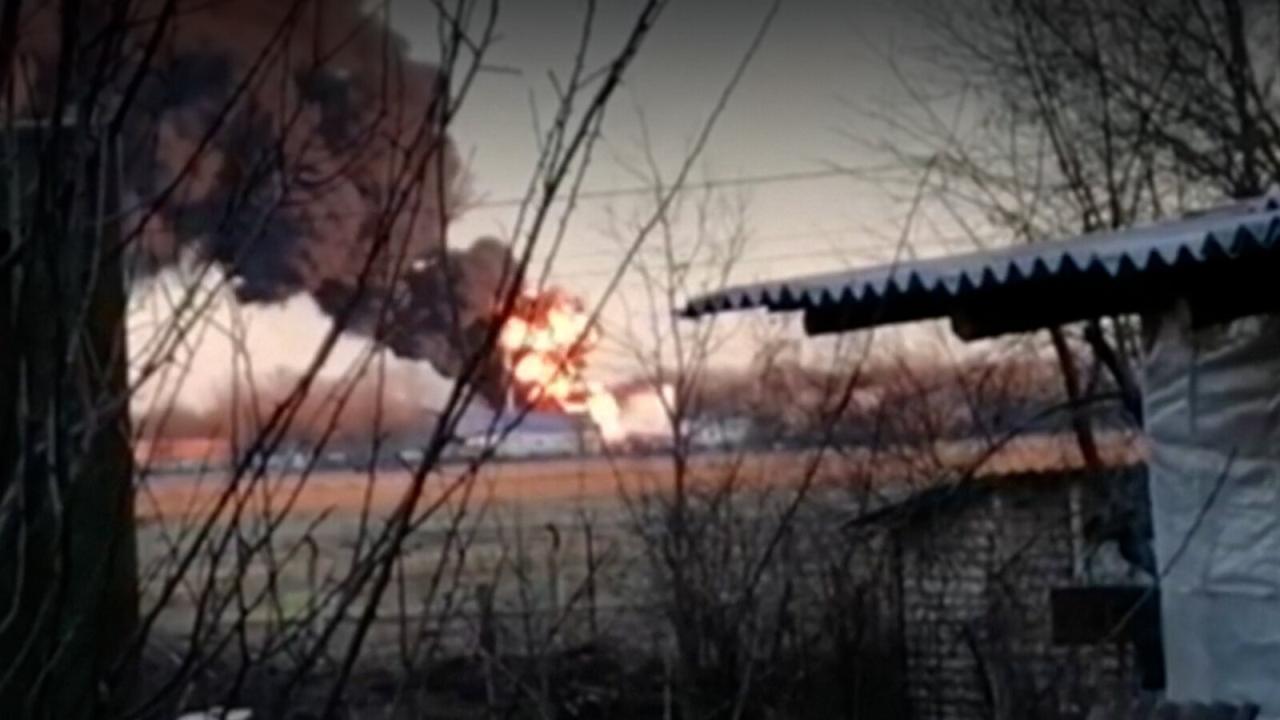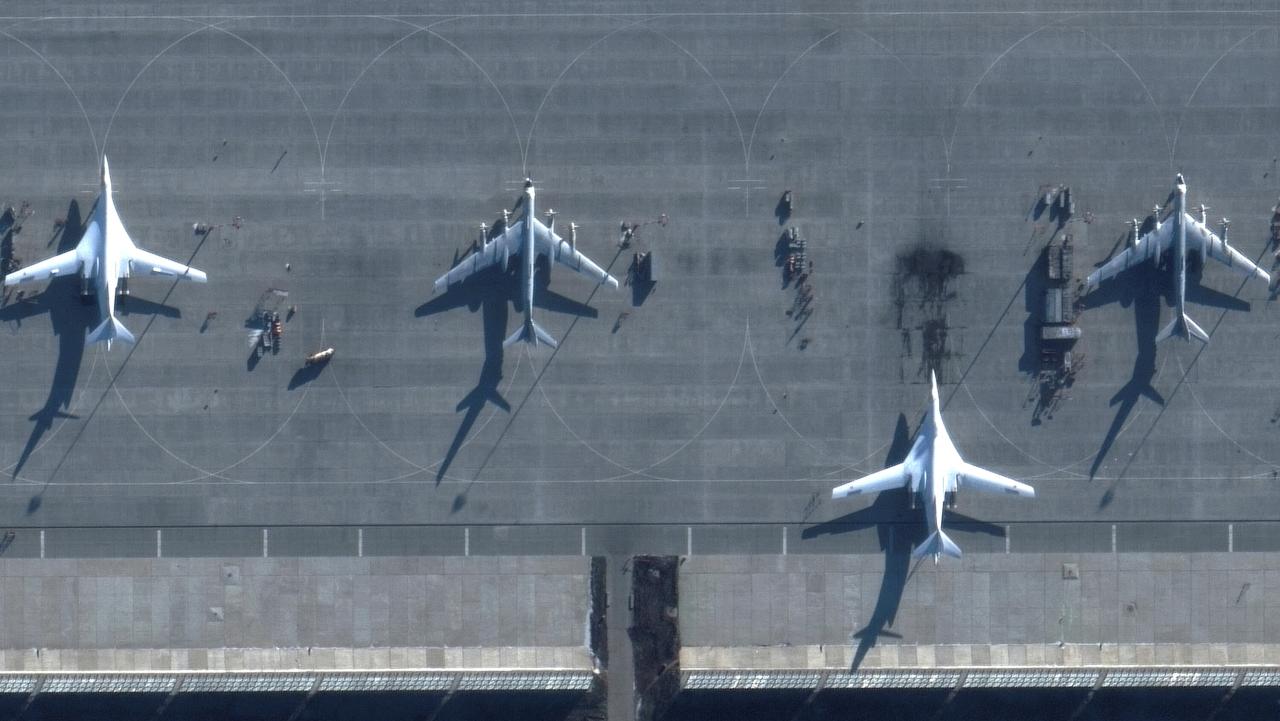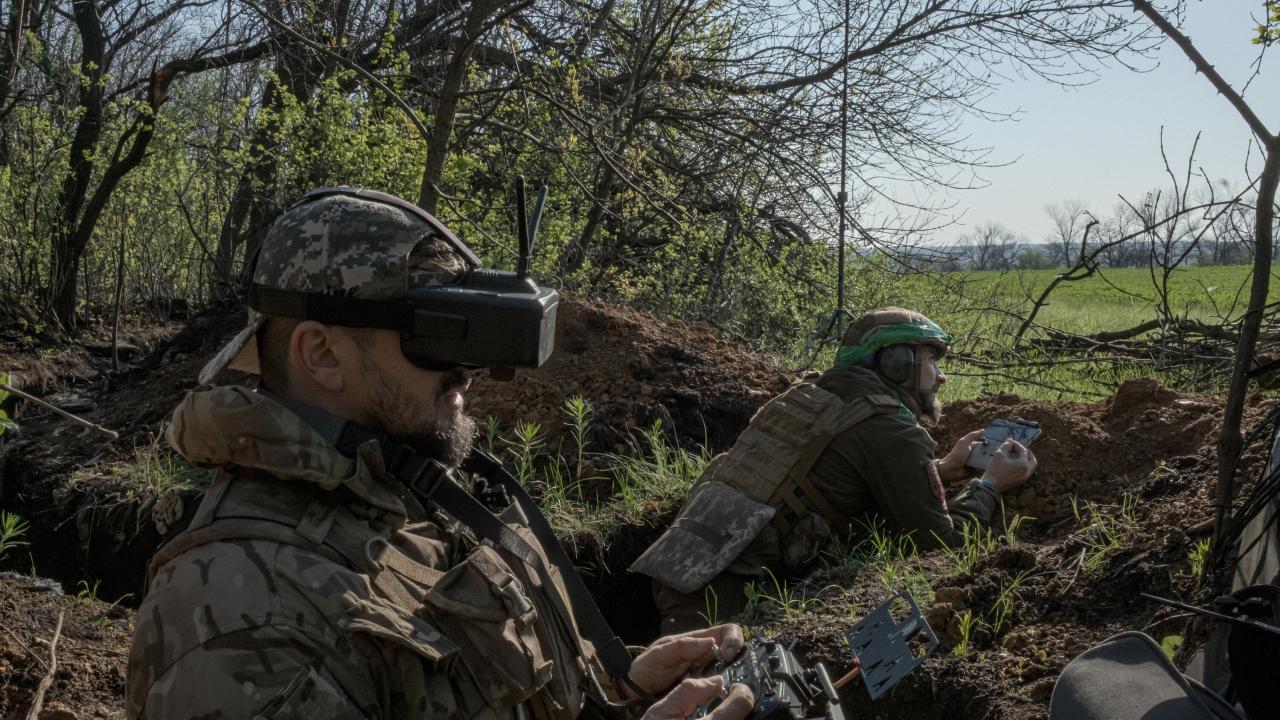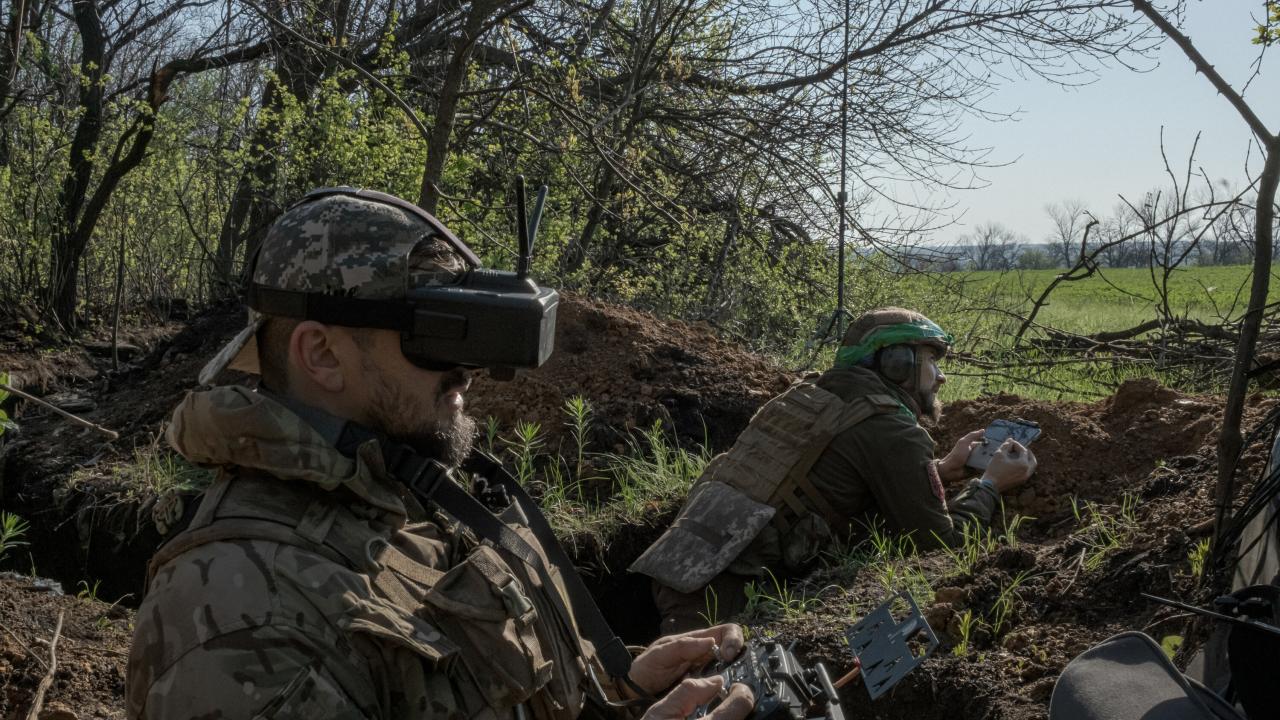Ukraine drone attack on russia – Ukraine drone attacks on Russia represent a significant escalation in the ongoing conflict. These attacks, targeting military infrastructure and other key locations within Russia, have raised critical questions about the evolving nature of warfare, the effectiveness of asymmetric tactics, and the potential for further escalation. This examination delves into the geographic scope, strategic implications, international reactions, and technological advancements associated with these drone operations, offering a comprehensive analysis of this crucial aspect of the conflict.
The frequency and location of these attacks vary, reflecting a calculated strategy by Ukraine to disrupt Russian operations and potentially influence the course of the war. The types of drones employed, their capabilities, and the level of damage inflicted are also key elements in understanding the broader context of this conflict. Furthermore, the international community’s response, the legal ramifications, and the public perception within both Russia and Ukraine all contribute to the complex narrative surrounding these attacks.
Ukrainian Drone Attacks on Russia: A Comprehensive Overview: Ukraine Drone Attack On Russia

The increasing frequency of Ukrainian drone attacks on Russian territory represents a significant development in the ongoing conflict. These attacks, while not yet altering the overall strategic balance, are having a notable impact on Russian military operations, morale, and public perception of the war. This analysis examines the geographic scope, military implications, international reactions, media coverage, and technological aspects of these drone operations, offering a comprehensive overview of this evolving facet of the conflict.
Geographic Scope and Frequency of Drone Attacks
Ukrainian drone attacks on Russian territory have demonstrated a broadening geographic reach and increasing frequency over time. Initial attacks were largely concentrated near the border regions, but more recent incidents have targeted locations deeper within Russia. This expansion suggests improvements in drone technology, range, and operational capabilities. The following table illustrates a sample of reported attacks, noting that comprehensive, verified data remains limited due to the nature of the conflict and information control by both sides.
| Date | Location | Type of Drone (if known) | Reported Damage |
|---|---|---|---|
| July 2023 | Bryansk Oblast | Unknown | Minor damage to infrastructure |
| August 2023 | Moscow | Likely modified civilian drones | Damage to residential buildings |
| September 2023 | Pskov Oblast | Reportedly modified Altay drones | Damage to military transport aircraft |
| October 2023 | Krasnodar Krai | Unknown | Oil refinery targeted, extent of damage unclear |
A bar chart visualizing monthly attack frequency would show an upward trend, with a noticeable increase in the number of attacks over the past year. While precise numbers are difficult to verify, open-source intelligence and news reports suggest a clear pattern of escalation. The chart would also reveal variations in attack frequency across different regions, with border areas initially experiencing the highest concentration, followed by a gradual expansion to more distant locations.
Several types of drones are believed to be used in these attacks. These include modified commercial drones with extended range and payload capabilities, as well as potentially some domestically produced models. The specifics of each drone type, including their range and payload capacity, are often kept confidential for operational security reasons. However, the increasing sophistication and range of the attacks strongly suggest a continuous improvement in the capabilities of the drones employed.
Military and Strategic Implications
The military objectives behind these drone attacks are multifaceted. They aim to disrupt Russian military logistics, damage infrastructure critical to the war effort, and undermine Russian morale and confidence. By targeting military airfields, fuel depots, and other key infrastructure, Ukraine seeks to degrade Russia’s ability to sustain its military operations in Ukraine. The psychological impact on the Russian population, particularly in regions previously perceived as safe, is also a significant factor.
These attacks, even if limited in their immediate physical impact, can contribute to a sense of insecurity and vulnerability within Russia.
The strategic implications are substantial. Drone attacks, while not replacing conventional military actions, offer a cost-effective way to inflict damage and disrupt Russian operations. Their effectiveness is amplified by their ability to reach targets that would be difficult or dangerous to attack using conventional methods. Compared to large-scale offensives, drone attacks require fewer resources and personnel, yet can achieve significant strategic effects.
Recent drone attacks on Russian territory by Ukraine have raised significant geopolitical tensions. While these events unfold, it’s a stark contrast to the lighter side of tracking, such as finding the NORAD Santa Tracker phone number for festive cheer. However, the seriousness of the Ukrainian drone attacks shouldn’t be understated; their impact on regional stability is considerable.
The effectiveness of the drone strikes needs to be evaluated against their cost in terms of resources, potential losses, and the risk of escalation.
Russia’s potential responses range from increased air defenses and electronic warfare measures to potential retaliatory strikes against Ukrainian military installations or infrastructure. An escalation scenario could involve a significant increase in Russian air strikes against Ukraine, potentially leading to a wider and more intense conflict. The risk of miscalculation and accidental escalation remains a serious concern.
International Reactions and Legal Aspects, Ukraine drone attack on russia
International reactions to the drone attacks have been varied. Some countries have expressed concerns about the escalation of the conflict and the potential for unintended consequences. Others have remained silent or offered muted responses. International organizations, while expressing concerns about civilian casualties, have generally refrained from explicitly condemning the attacks. The legal implications under international humanitarian law are complex and contested, with varying interpretations regarding the legality of targeting military assets within Russian territory.
Recent Ukrainian drone attacks on Russian territory have highlighted the evolving role of unmanned aerial vehicles in modern warfare. This increased focus on drone technology is also evident in civilian applications, such as the impressive displays seen at events like the orlando drone show , showcasing the potential for both destructive and spectacular uses. The contrast between these two applications underscores the complex implications of this rapidly advancing technology in the context of the ongoing conflict in Ukraine.
| Country/Organization | Stance |
|---|---|
| United States | Expresses concern about escalation, but avoids direct condemnation |
| European Union | Condemns the war but avoids explicit condemnation of the drone attacks. |
| Russia | Condemns the attacks as acts of terrorism |
| United Nations | Calls for de-escalation and adherence to international humanitarian law |
The potential for international condemnation and sanctions is limited due to the complexities of the conflict and the lack of a clear consensus among major international actors. While some countries might express concerns, imposing sanctions directly related to the drone attacks would likely be politically challenging given the broader geopolitical context.
Recent drone attacks on Russia by Ukraine highlight the increasing use of unmanned aerial vehicles in modern warfare. The precision and potential for widespread disruption are evident, contrasting sharply with the less-than-precise outcome of a recent civilian event; consider the unexpected issues experienced during the orlando drone show malfunction , which underscores the importance of robust technological reliability in both military and entertainment contexts.
Ultimately, both instances showcase the evolving capabilities and potential pitfalls of drone technology.
Public Perception and Media Coverage

The portrayal of these drone attacks varies significantly across different media outlets. Russian state media generally frames the attacks as acts of terrorism, emphasizing the damage to civilian infrastructure and highlighting the threat to Russian citizens. International media outlets, while acknowledging the potential for civilian casualties, often focus on the military implications of the attacks and Ukraine’s right to defend itself.
The narratives presented often reflect the geopolitical positions and biases of the respective news organizations.
Public perception within Russia is shaped by the dominant narrative promoted by state-controlled media. This narrative emphasizes the threat to national security and the need for a strong response. In Ukraine, the attacks are often viewed as a legitimate military tactic to weaken Russia’s war effort. Public opinion in both countries is likely influenced by the information they receive through their respective media outlets.
A visual representation of media coverage over time would show a correlation between the frequency of attacks and the intensity of media coverage, with spikes in attention following significant incidents.
Technological Aspects and Future Trends

The drone attacks showcase significant technological advancements in drone technology, including improvements in range, payload capacity, targeting accuracy, and operational tactics. The ability to strike targets deep within Russian territory suggests a considerable increase in drone capabilities compared to previous conflicts. The attacks also highlight the growing importance of electronic warfare and counter-drone technologies in modern warfare.
The potential for future escalation is significant. As drone technology continues to advance, the frequency and sophistication of attacks could increase, potentially leading to a new phase in the conflict. The attacks might also inspire other actors to employ similar tactics in their own conflicts. The development and deployment of counter-drone technologies will become increasingly important in mitigating the risks associated with drone warfare.
The Ukrainian drone attacks on Russia mark a turning point in the conflict, showcasing the evolving role of unmanned aerial vehicles in modern warfare. The strategic implications, international repercussions, and technological advancements demonstrated by these attacks are far-reaching and will undoubtedly shape future conflicts. Analyzing these events provides valuable insights into the evolving dynamics of the war and the potential for future escalations, underscoring the need for a comprehensive understanding of this crucial aspect of the conflict.
Question Bank
What types of damage have been reported from these drone attacks?
Reports vary, but damage has included destruction of military equipment, infrastructure damage, and in some cases, casualties.
How does Russia respond to these drone attacks?
Russia’s responses have included increased air defenses, retaliatory actions, and attempts to disrupt Ukrainian drone operations. Specific responses vary depending on the nature and location of the attack.
What is the international legal standing of these drone attacks?
The legality of these attacks is complex and debated, involving interpretations of international humanitarian law and the laws of armed conflict. There’s no universally agreed-upon conclusion.
What is the role of civilian casualties in these attacks?
While Ukraine aims to avoid civilian casualties, reports of unintended civilian harm have emerged, adding a further layer of complexity to the ethical and legal considerations surrounding these attacks.
